From Bookshelf to Hashtag: Examples on How Publishers Craft Author Brands Then and Now
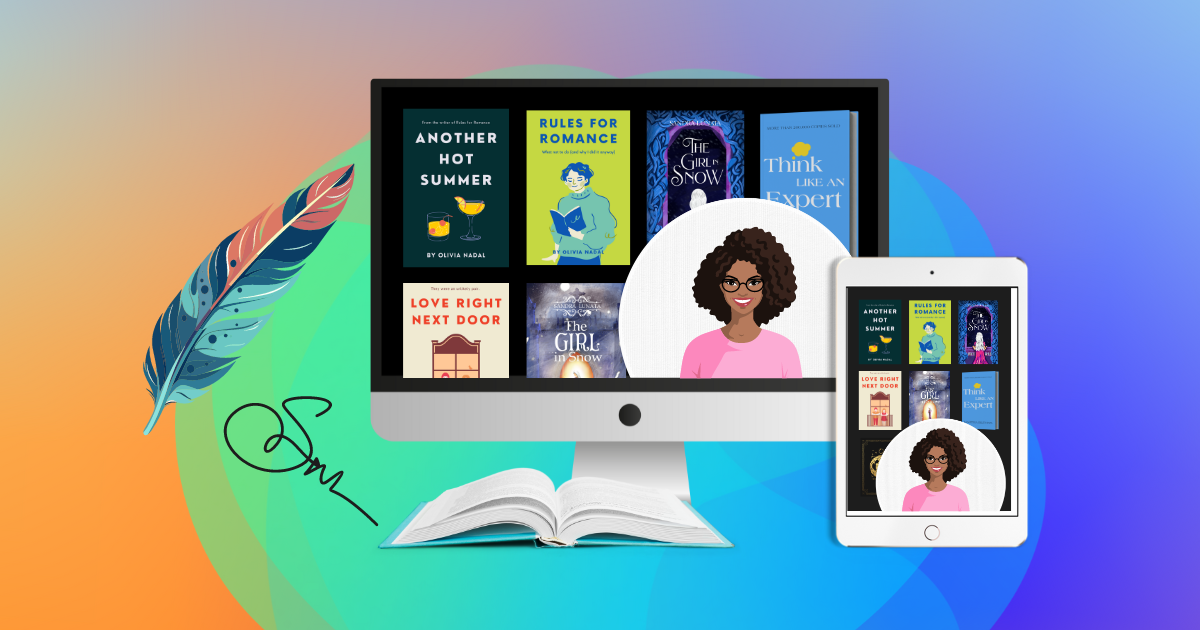
An author brand is a ticket to publishing success. In a world where Instagram followers can outweigh literary merit, smart publishers know that an author's online presence is as crucial as their manuscript. It's not about choosing style over substance but recognizing that today's readers want to connect with the person behind the words.
During the past decades, everything marketing-related was done by a publisher. Now, they seek out authors who've already laid the groundwork or encourage them to start creating an online community for their own success.
A solid online presence, an engaged social media following, and a knack for resonating with readers online – these are the new golden tickets in publishing.
Let's see a few examples of old and new ways of building author brands, together with some book launches that remain in history.
Main takeaways:
- Publishers now value an author's online presence and marketing potential alongside their writing skills. This shift reflects the significance of an author's ability to connect with their audience, which is as important as the quality of their manuscript.
- Publishers employ a wide range of marketing strategies to promote books, from coordinated pre-launch campaigns and themed launch parties to strategic media appearances and eye-catching in-store displays.
- With the rise of social media, authors are now expected to actively participate in their own brand-building and marketing efforts.
A. Publishers as Brand-Building Maestros
In the past, publishers were the masterminds behind author fame, orchestrating traditional publicity with finesse. However, as times changed, they skillfully adapted to the digital landscape. Now, savvy publishers blend old-school tactics with cutting-edge digital marketing, creating multi-faceted campaigns that resonate both online and offline.
1. Launch parties
Publishers would sometimes throw thematic launch parties, which have been a staple of publishing promotion for years. These parties were used to build hype, tie into the book's themes, and offer unique experiences for media, booksellers, and sometimes fans.
The goal was to make the book release feel like a major cultural event, generating word-of-mouth publicity and media coverage.
✨ Midnight Magic Party for Harry Potter
On the night of July 21, Harry Potter parties were all over the place—in every state in the U.S. and even in a lot of countries worldwide. Chain bookstores threw big events, like the epic one at Barnes & Noble in NYC's Union Square with HP narrator Jim Dale.
And the indie bookstores? They really stepped up, attracting hundreds, and sometimes even thousands, of fans to celebrate Harry and the magic of independent bookselling.
Harry Potter's American publisher Scholastic celebrated the release of Harry Potter and the Deathly Hallows with a huge event in Manhattan's SoHo, transforming the area into "Harry Potter Place" and drawing an estimated 12,000 attendees.
The festivities included appearances by the Knight Bus, a towering Whomping Willow, and various themed activities. Across the U.S., bookstores and libraries hosted their own Potter-themed parties, from costume contests and magic shows to interactive games and midnight book sales.
Publishers know all too well that when it comes to YA literature and children's literature, it is not only about the book but more so about building lasting memories.
Here's what we're talking about: a Reddit user and a Harry Potter fan talking about the Midnight Magic Party years after it happened.
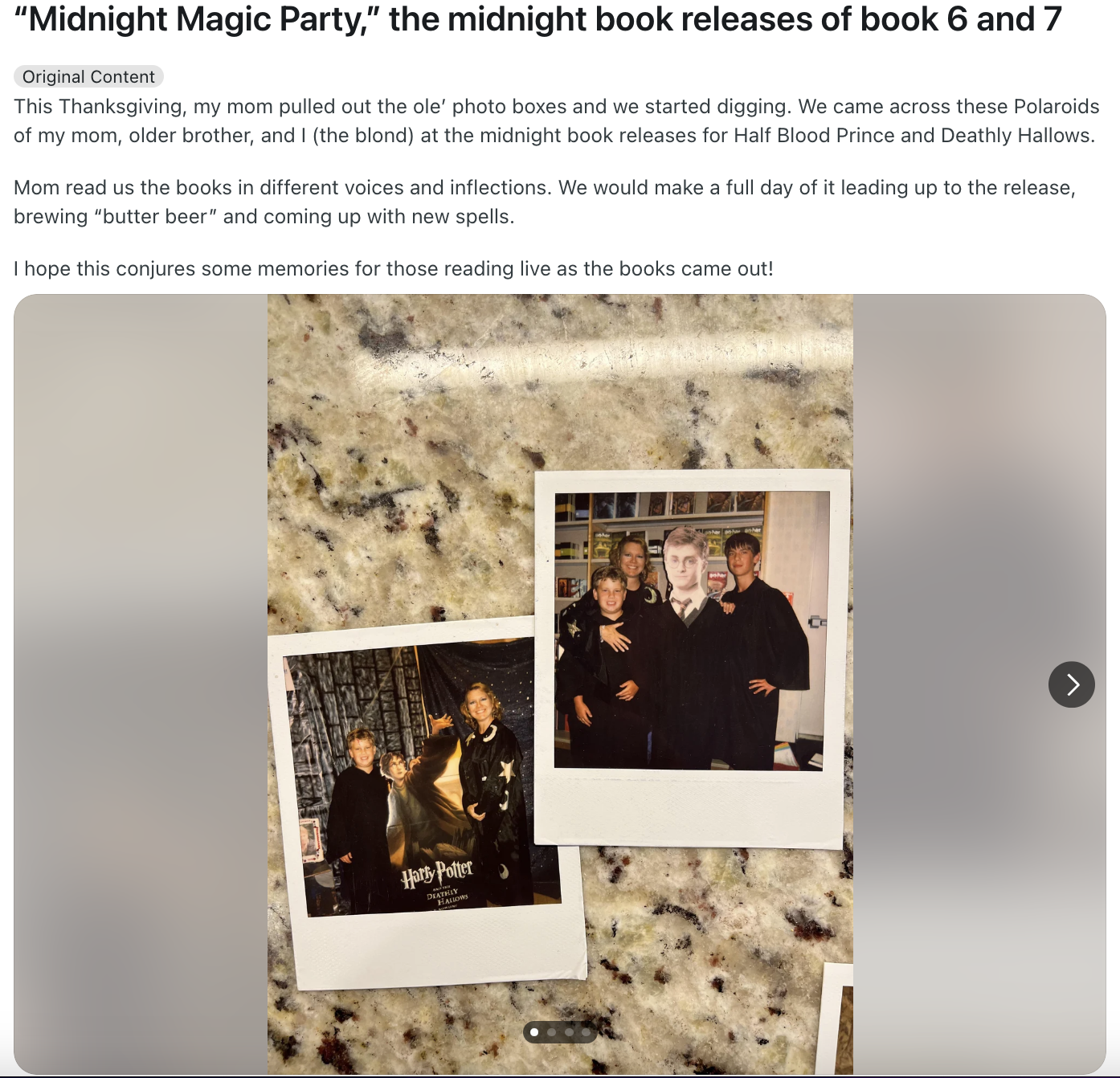
☀️Day in Canberra with Riley and the Jumpy Kangaroo: A journey around Canberra
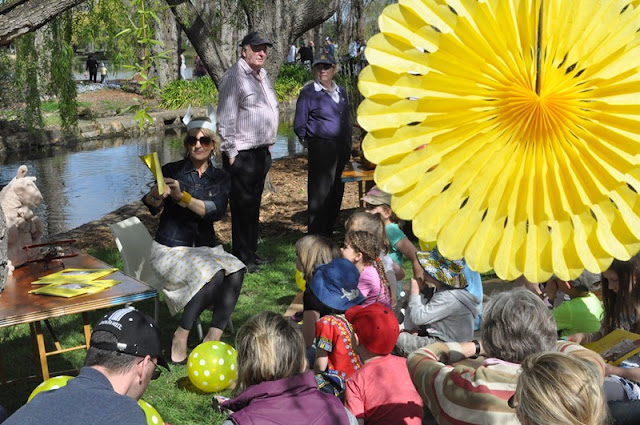
As an editor and children's book author, Tania McCartney knows how to manage a crowd of curious children, even in the outdoors. The event was not solely focused on the book launch. It was built as a community event, celebrating time spent with family, friends, and neighbors.
It included:
- a treasure hunt,
- (healthy) treats,
- a good, friendly pace.
Tania shares her experience in book launches for fellow children's authors here.
🎵 HarperCollins' launch for Michael Chabon's Telegraph Avenue
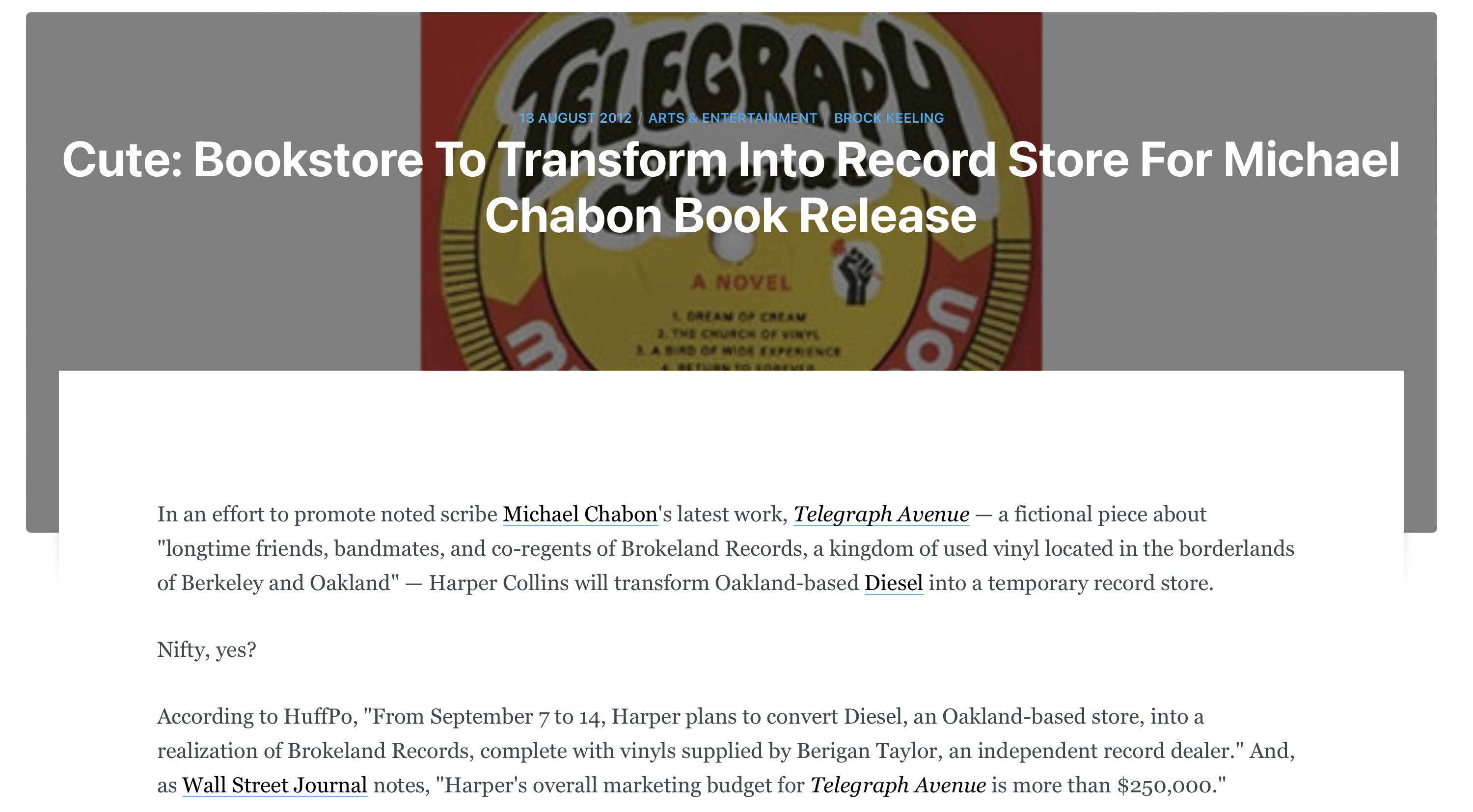
The book launch for Michael Chabon's Telegraph Avenue took place at a vintage record store in Oakland. What's really cool about it is that the bookstore transformed into a record store, mirroring the book's setting.
The event also included a reading and signing session by Chabon.
The marketing efforts for this book launch were synchronized to spark as much interest and curiosity as possible. They even had a discussion with Adam Savage of Mythbusters. Overall, the marketing budget for Telegraph Avenue was more than $250.000.
🌙 Midnight release party for Riverstone Books The House of Flame and Shadow
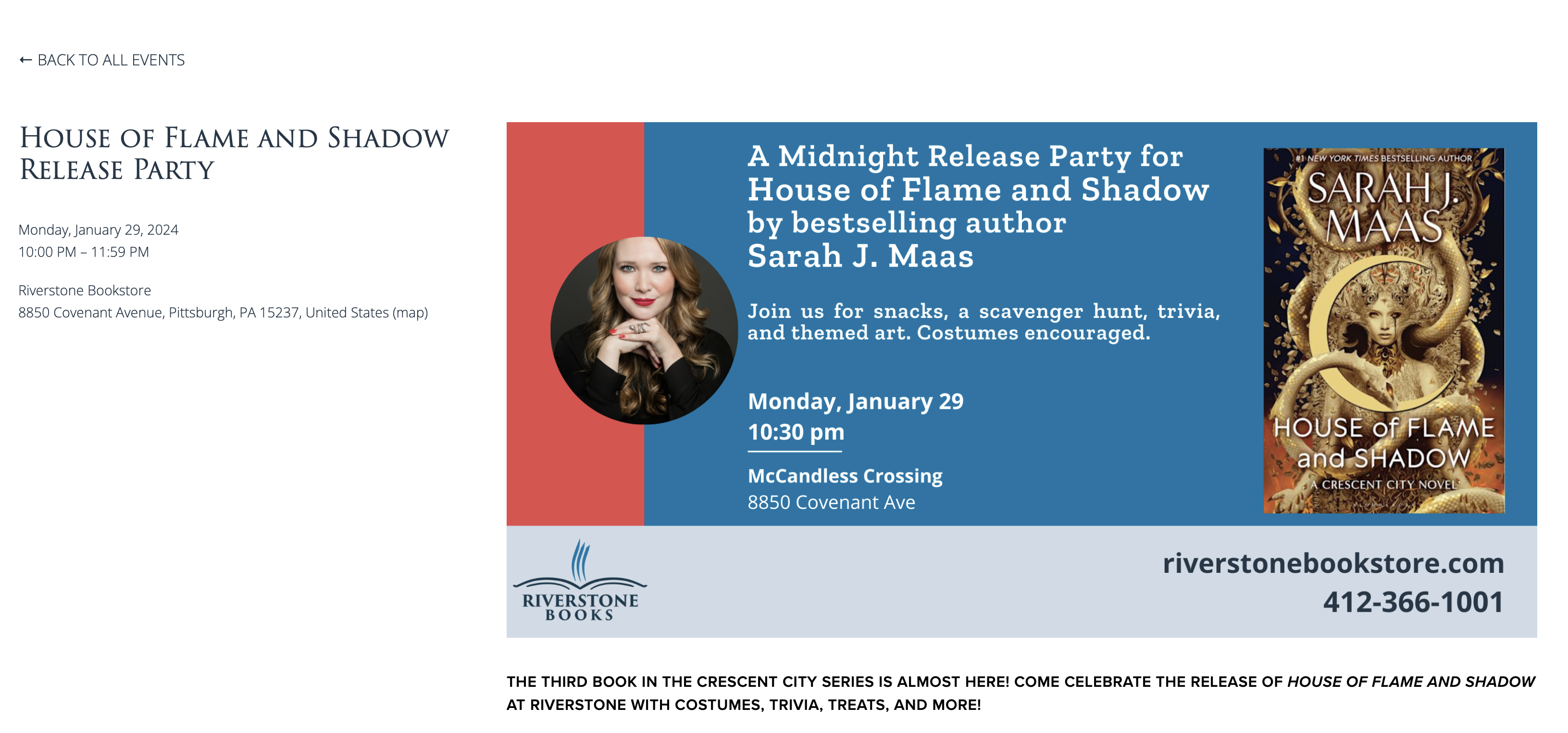
When The House of Flame and Shadow was released, Riverstone Books created a thematic party to make everyone get into the book's mood. The marketing hooks this event proposed to fans were:
- chance to get a special edition with an additional chapter (exclusive content)
- Crescent City-themed food, drinks, and activities. (immersive experience)
- costume contest, trivia, and scavenger hunt. (fan engagement boosters)
- bundled tickets with book copy and exclusive merchandise. (limited offers)
This is exactly the type of event that appeals to fans by creating a sense of exclusivity and community. The chance to get a special edition with extra content is a powerful motivator for dedicated fans, as it offers something unique that not everyone will have.
2. Displays
Probably the most classic move (but effective nonetheless) is a bookstore window display with a new release you want everyone to know about.
Even if you don't follow every book that has been published lately, a trip to your local bookstore will help you find out what's new and what's popular at the moment.
With this level of attention dedicated to newly published books, customers are sure not to miss them.
Here are some inspiring examples:
Penguin Random House
Penguin's iconic orange paperbacks made their authors instantly recognizable on shelves. Their penguin display itself received a design award.
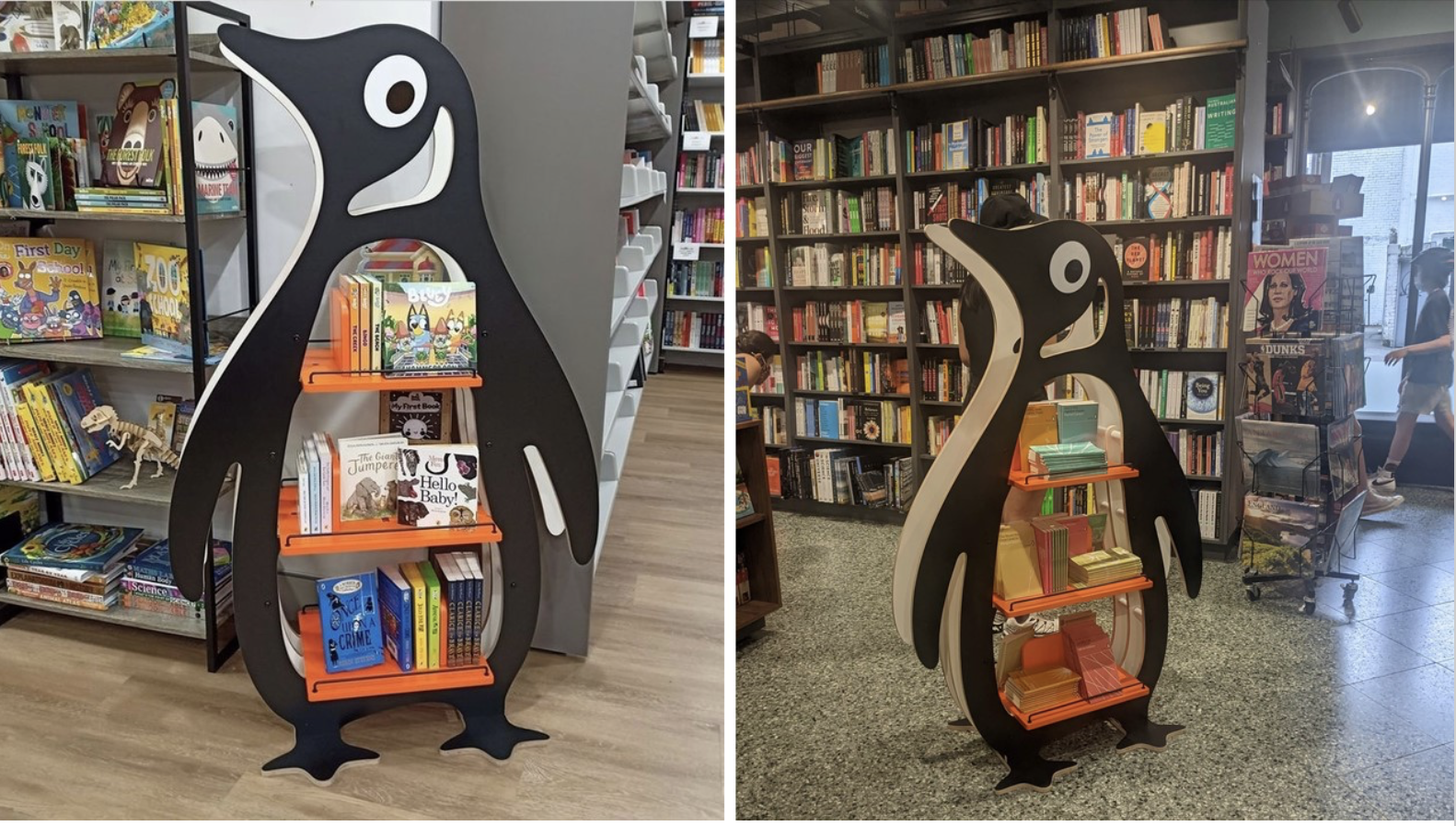
R. F. Kuang's Yellowface
R. F. Kuang's Yellowface striking yellow cover dominated displays at London Book Fair and Waterstones branches nationwide. Special editions with sprayed edges turned heads, while innovative bookshop displays featured working typewriters.
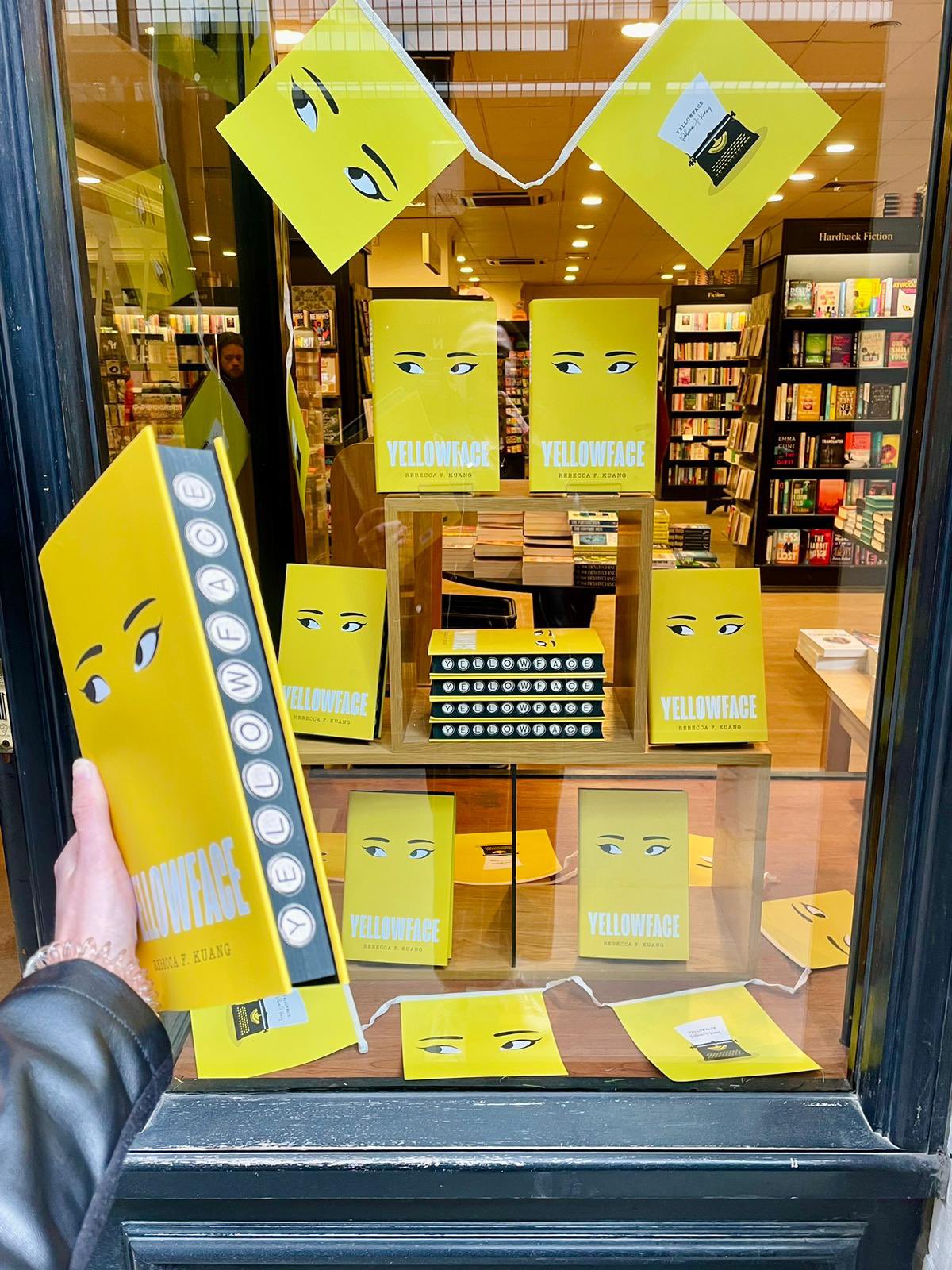
Bonnie Garmus's Lessons in Chemistry
For Bonnie Garmus's Lessons in Chemistry the eye-catching jacket cover – a visual cocktail of science and media themes – set the tone. The bookstore display was all about colorful marketing materials heavy on the chemistry vibe.

The special displays were just the cherry on top for this particular title, for which publisher Doubleday UK also prepared an Instagram video countdown to publication day.
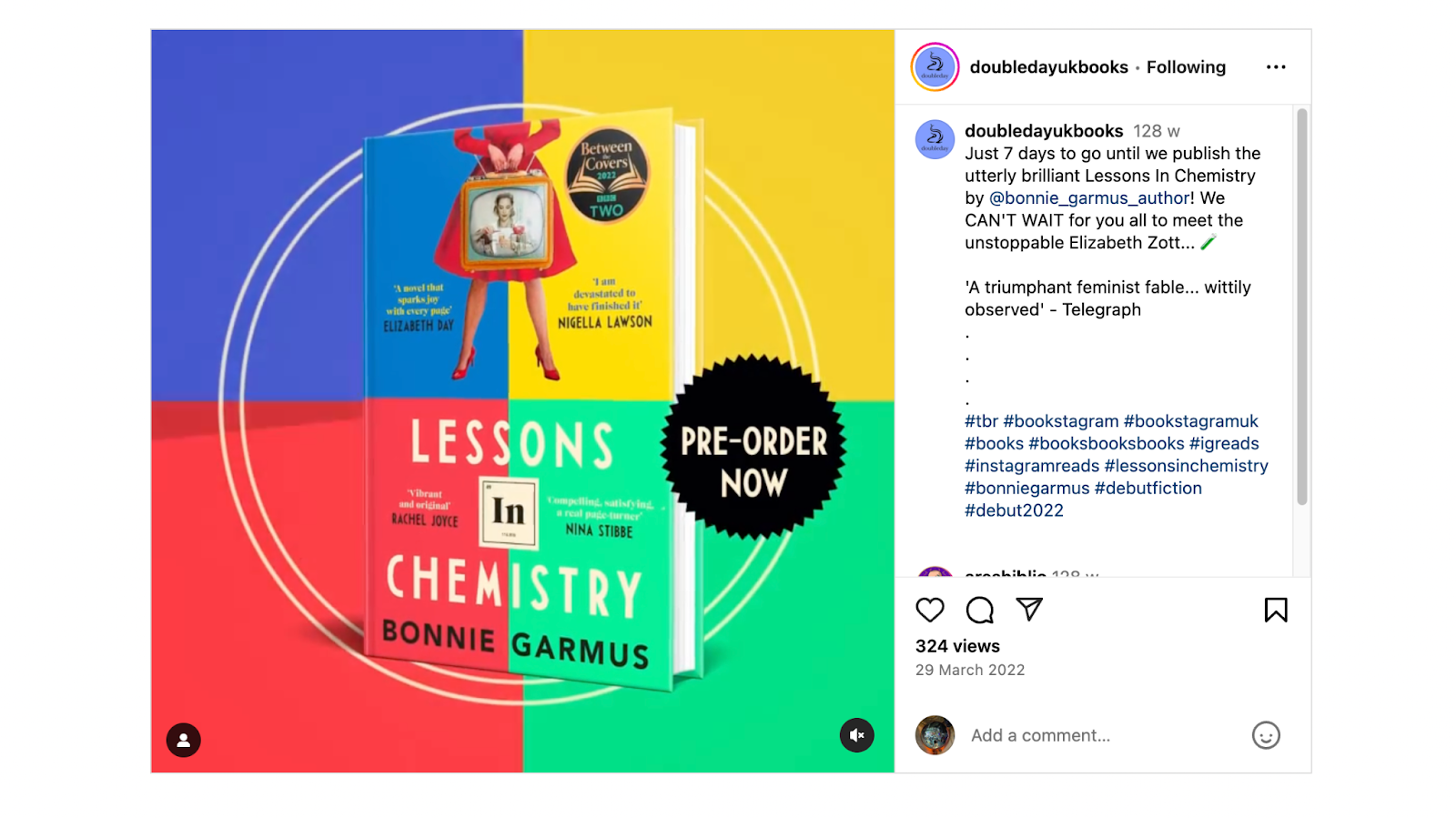
They encouraged bookstagrammers and bookshops to share unboxing videos, distributed complimentary merchandise with a science aesthetic, and designed and distributed themed props to accompany display tables. All of these were intended to create anticipation and a sense of privilege among book influencers.
3. Coordinated pre-launch buzz
Random House's push for The Da Vinci Code turned Dan Brown from an unknown into a sensation with a massive marketing blitz and secretive pre-launch campaign.
Here are some key steps they reportedly took:
1. Advance copies strategy
They sent out an unusually high number of advance reader copies (around 10,000) to booksellers, reviewers, and influential readers months before the official release.
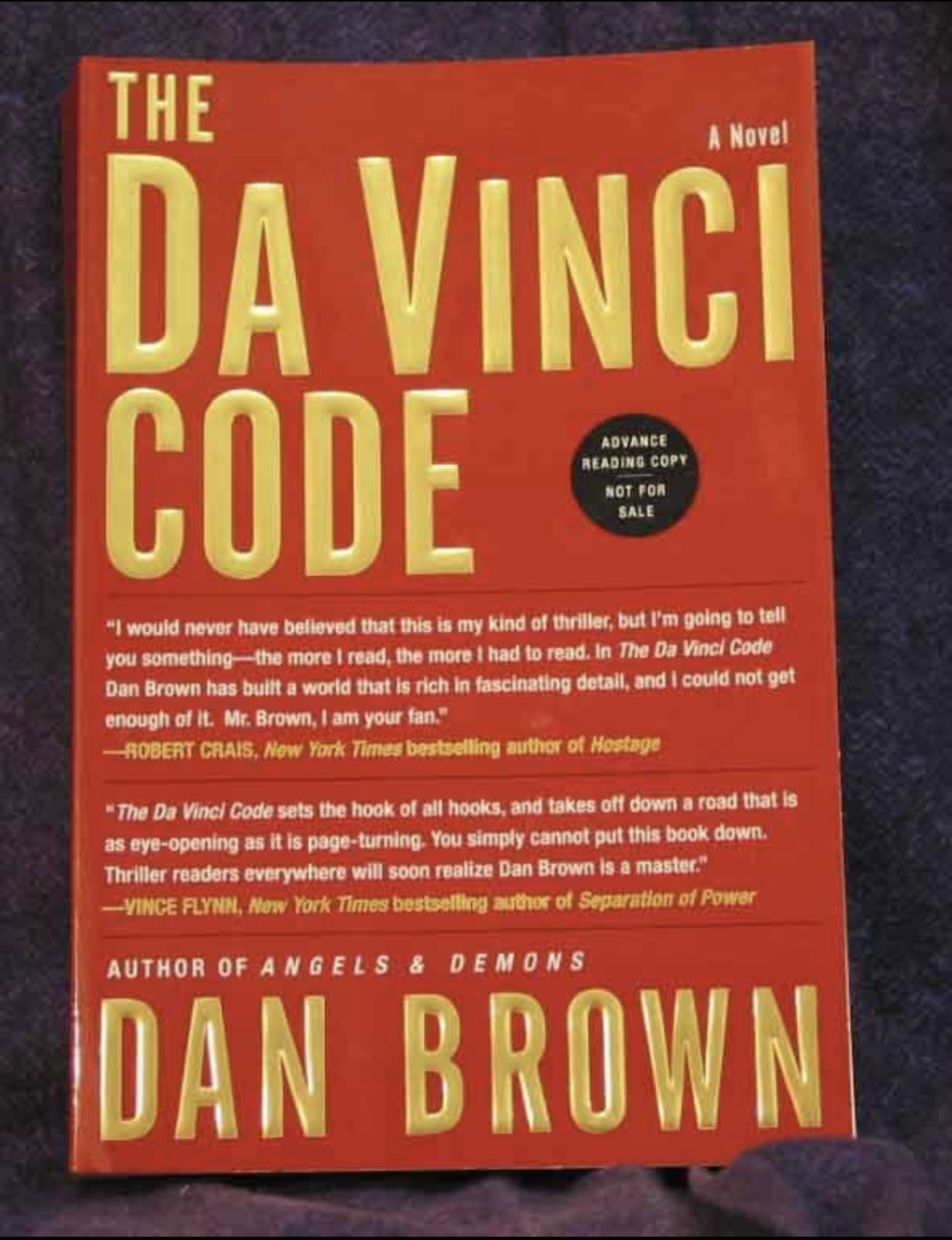
The enthusiastic critical reception created a buzz that took readers to the bookshops to buy their copies. Awaiting were 230,000 copies, 1200 floor displays, Mona Lisa posters, and an ongoing marketing campaign at DaVinciCode.com.
2. Teaser campaign
The publisher created mysterious ads and cryptic messages to generate buzz, playing on the book's themes of codes and secrets.
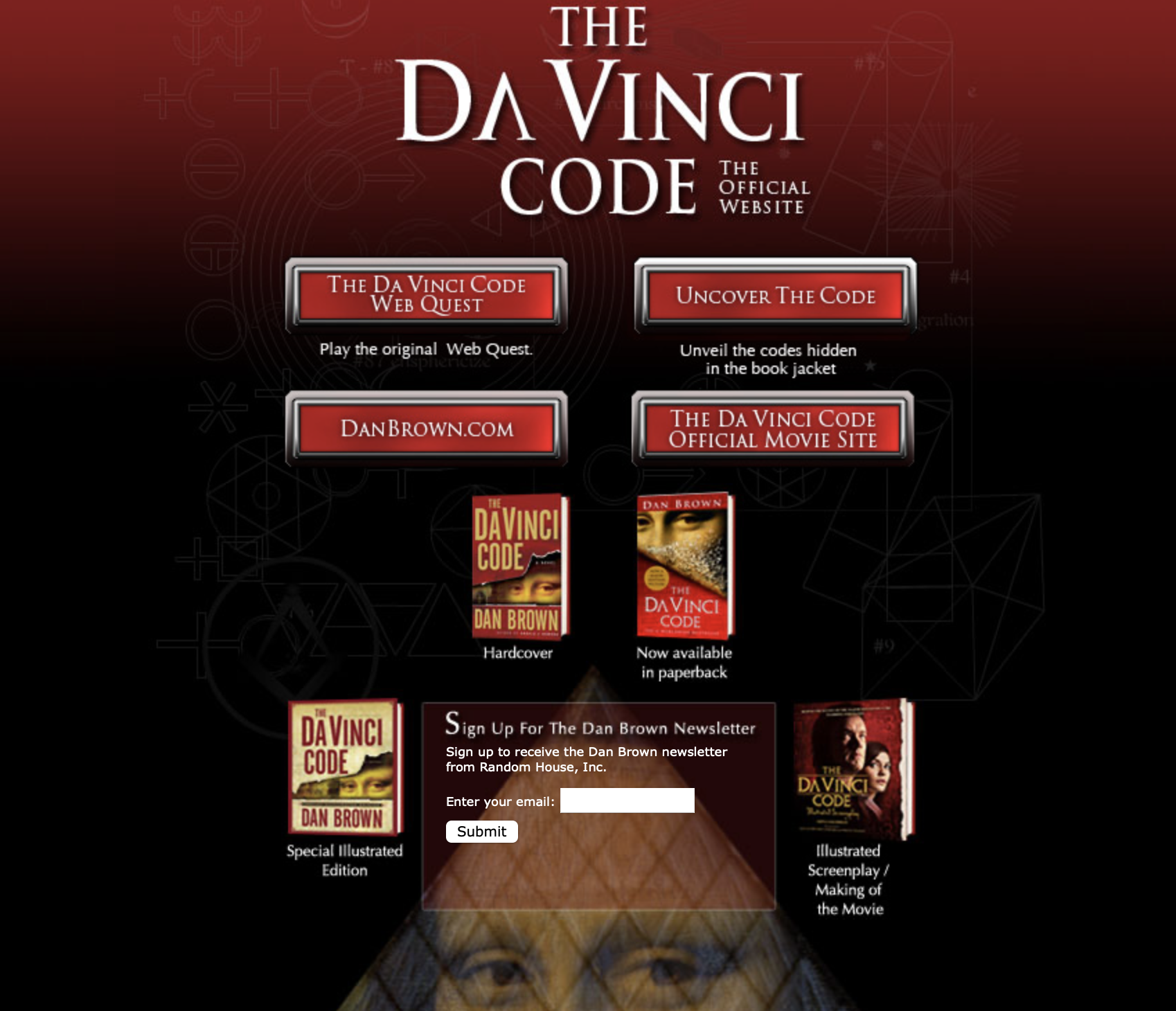
It was later revealed that the jacket of the novel had four clues hidden in it. Cracking the code offered the prize winner a trip to Paris. Publishers were aware that by this time, they were not teasing curios readers but avid fans who wanted to live the experience for real.
3. Targeted marketing
They focused on both traditional readers and new audiences interested in art, history, and conspiracy theories.
4. Bookseller engagement
Random House heavily involved booksellers, providing them with special displays and promotional materials.
5. Online presence
They developed an interactive website with puzzles and additional content related to the book's themes.
6. Media blitz
They coordinated a simultaneous release of reviews and interviews across various media outlets.
7. Author tours
They organized an extensive author tour for Dan Brown, including both traditional bookstore signings and lectures at museums and historical societies.
4. Talk shows
Schmoozing with journalists was the way forward pre-social media, and publishers were really pulling strings to get their authors on the right talk shows.
- HarperCollins got J.K. Rowling on Oprah for her first U.S. TV interview. That's the kind of coup publishers aim for.
- Penguin author Margaret Atwood's interview with CNN journalist Christiane Amanpour in 2019 wasn't just another book chat – it was a brand reinforcement. Atwood drew chilling parallels between her 1980s dystopian masterpiece and the time's political climate.
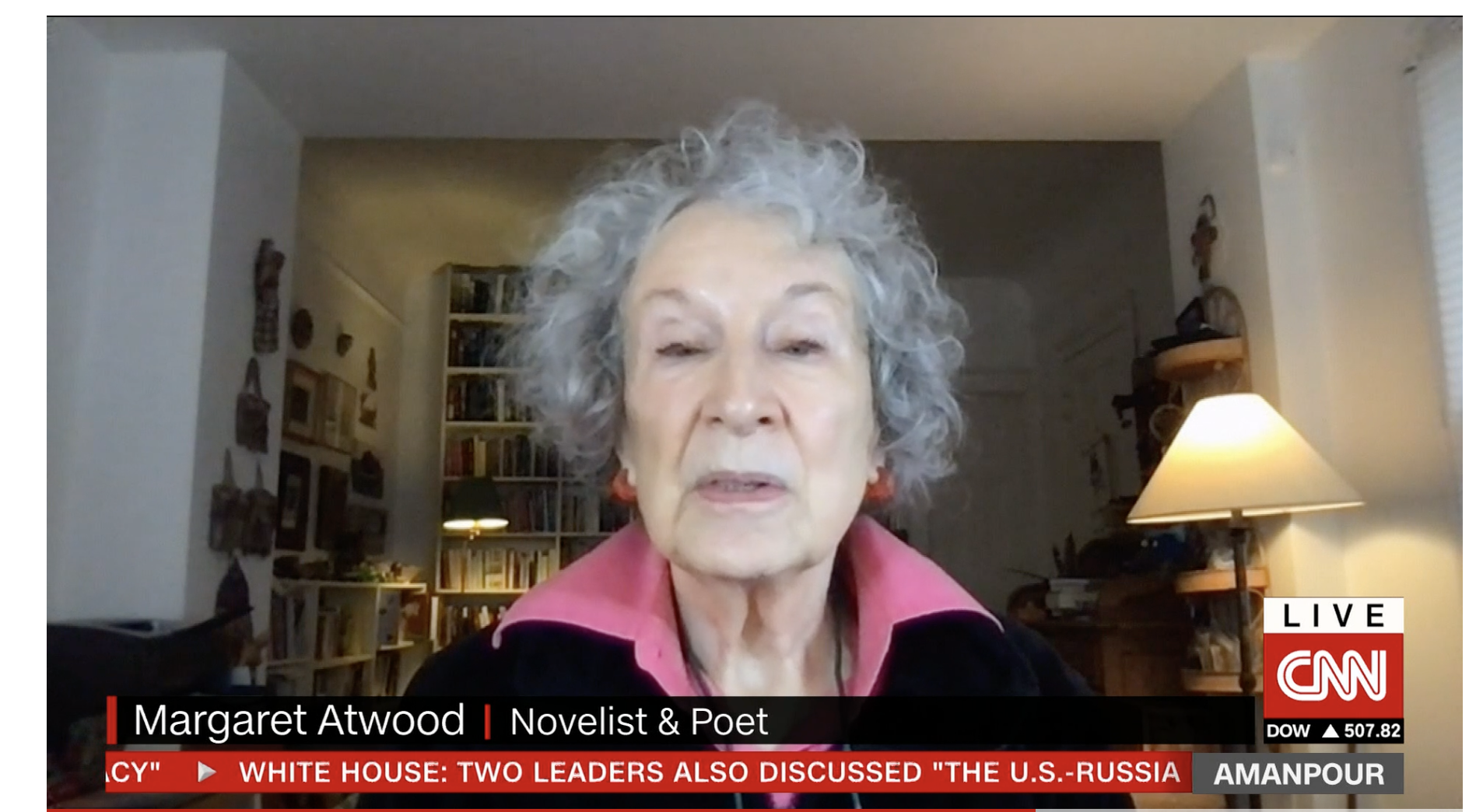
B. Author Branding in the Age of Social Media
Living with likes, shares, and viral tweets, the author-publisher relationship has changed.
Gone are the days when authors could hide behind their typewriters and let their publishers do all the heavy lifting.
Now, it's all about collaboration to craft a digital persona as compelling as the books themselves.
Here are some of the expectations publishers have from authors to keep their brand shining.
1. Social media superstar
Many major publishers, including HarperCollins, Penguin Random House, and others, often encourage their authors to engage with readers on social media platforms.
Neil Gaiman, while published by several publishers including HarperCollins, is known for his active and engaging presence on platforms like Twitter, where he has over 3 million followers. He frequently interacts with fans, sharing updates about his work and responding to reader questions.
There are several other authors who are rocking social media.
Anne Lamott
Anne Lamott has a following of 249.2 K on X (Twitter), where she shares news about her writing, politics, and social injustice
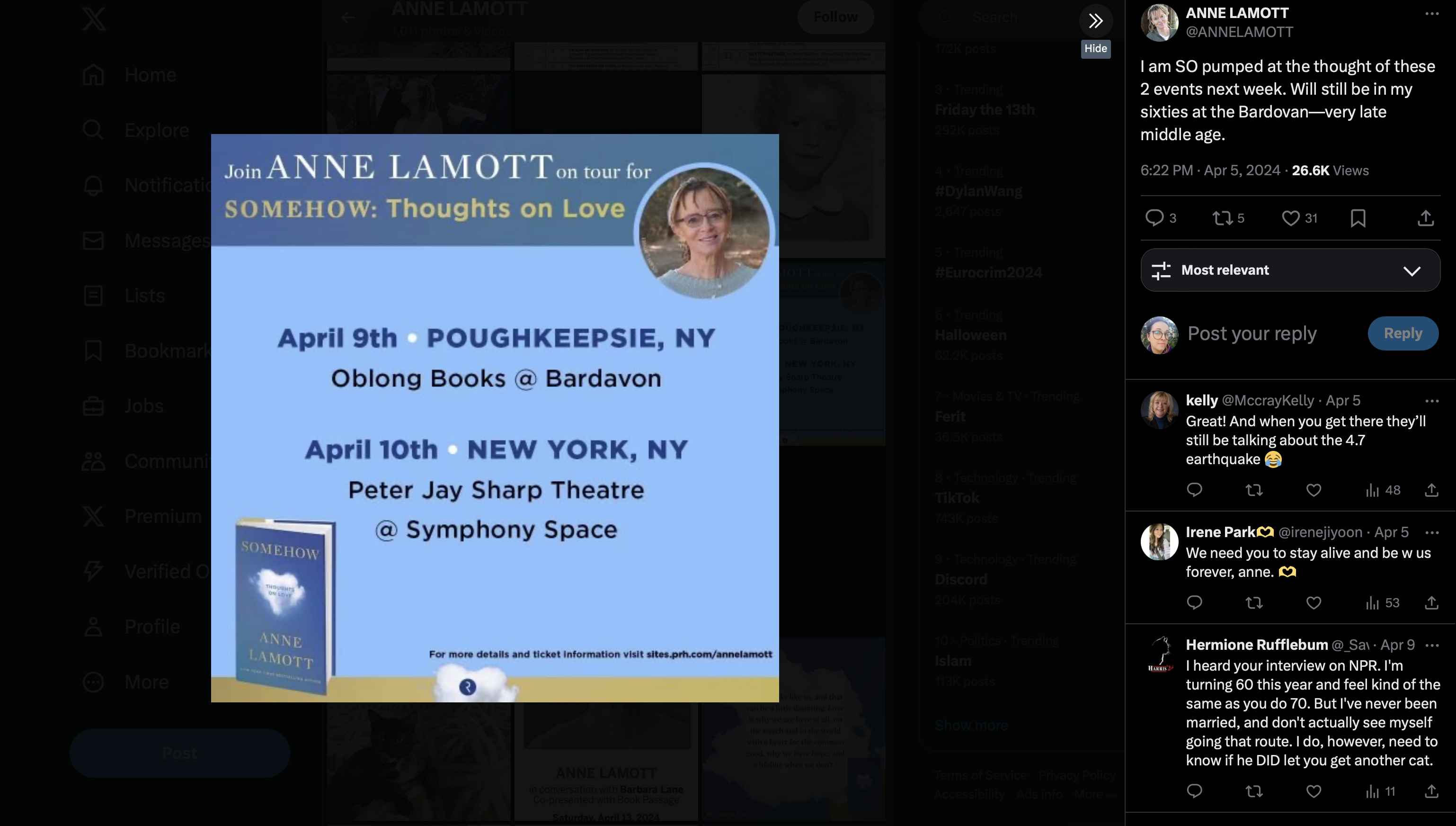
Lucy Powrie
Lucy Powrie on Instagram, where she boasts a 14k following that she keeps engaged and interested in her writing.
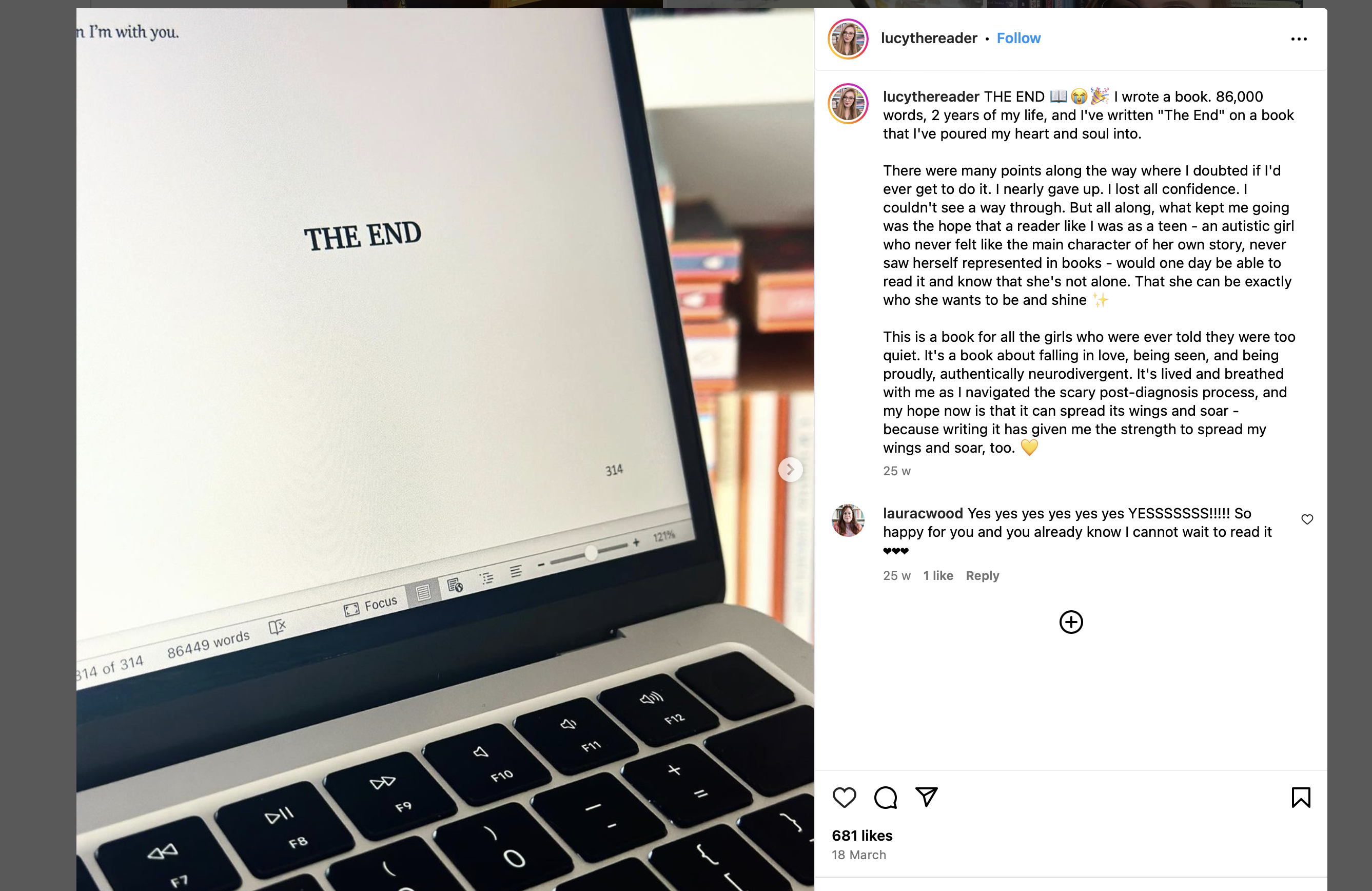
Haruki Murakami
Haruki Murakami on Facebook. His page is entirely managed by his publisher as Haruki Murakami is a notoriously social media-shy author.
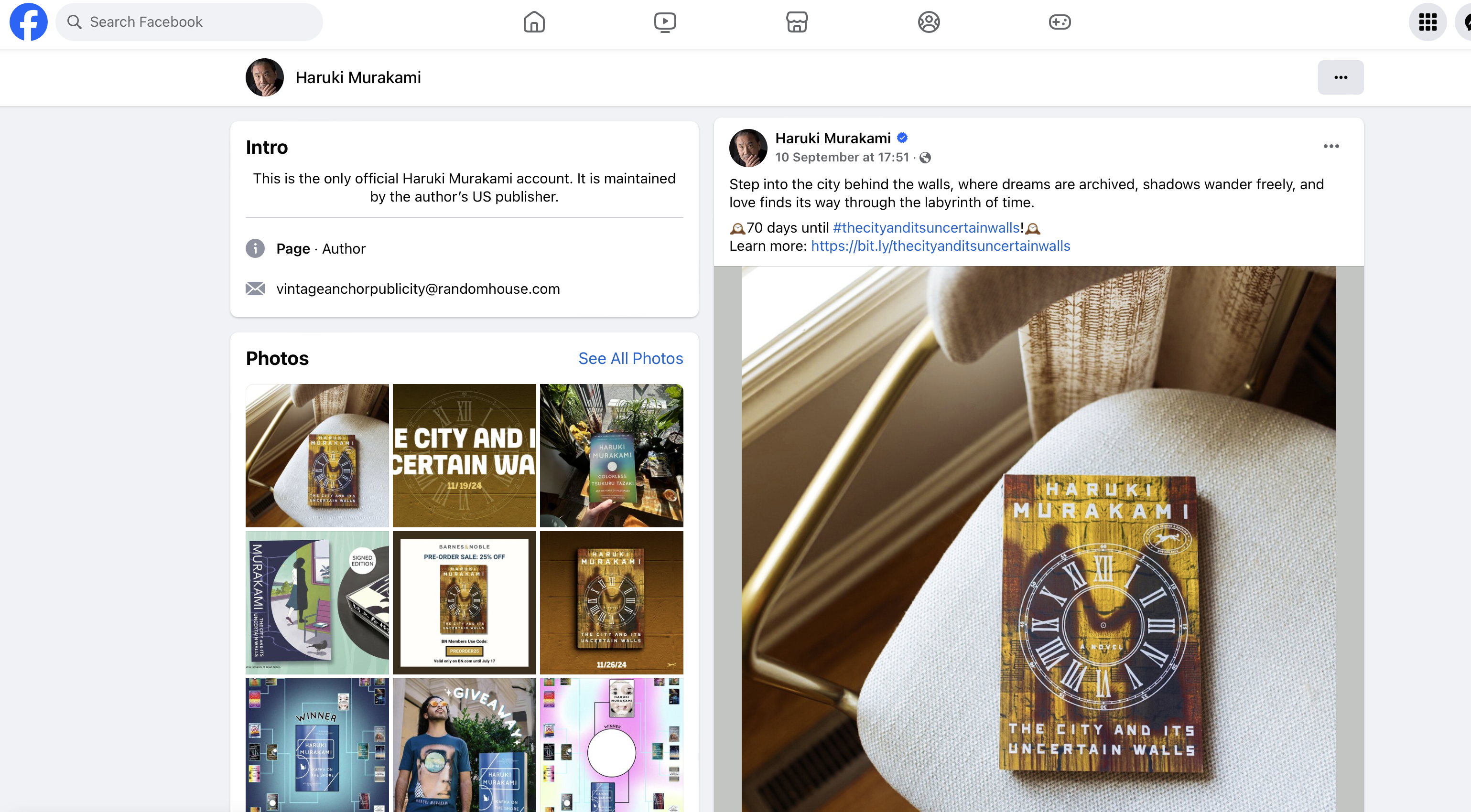
2. Content creator extraordinaire
John Green, published by Penguin Random House, goes beyond books with his popular vlogbrothers YouTube channel. This aligns perfectly with his publisher's strategy to reach younger readers where they spend their time.
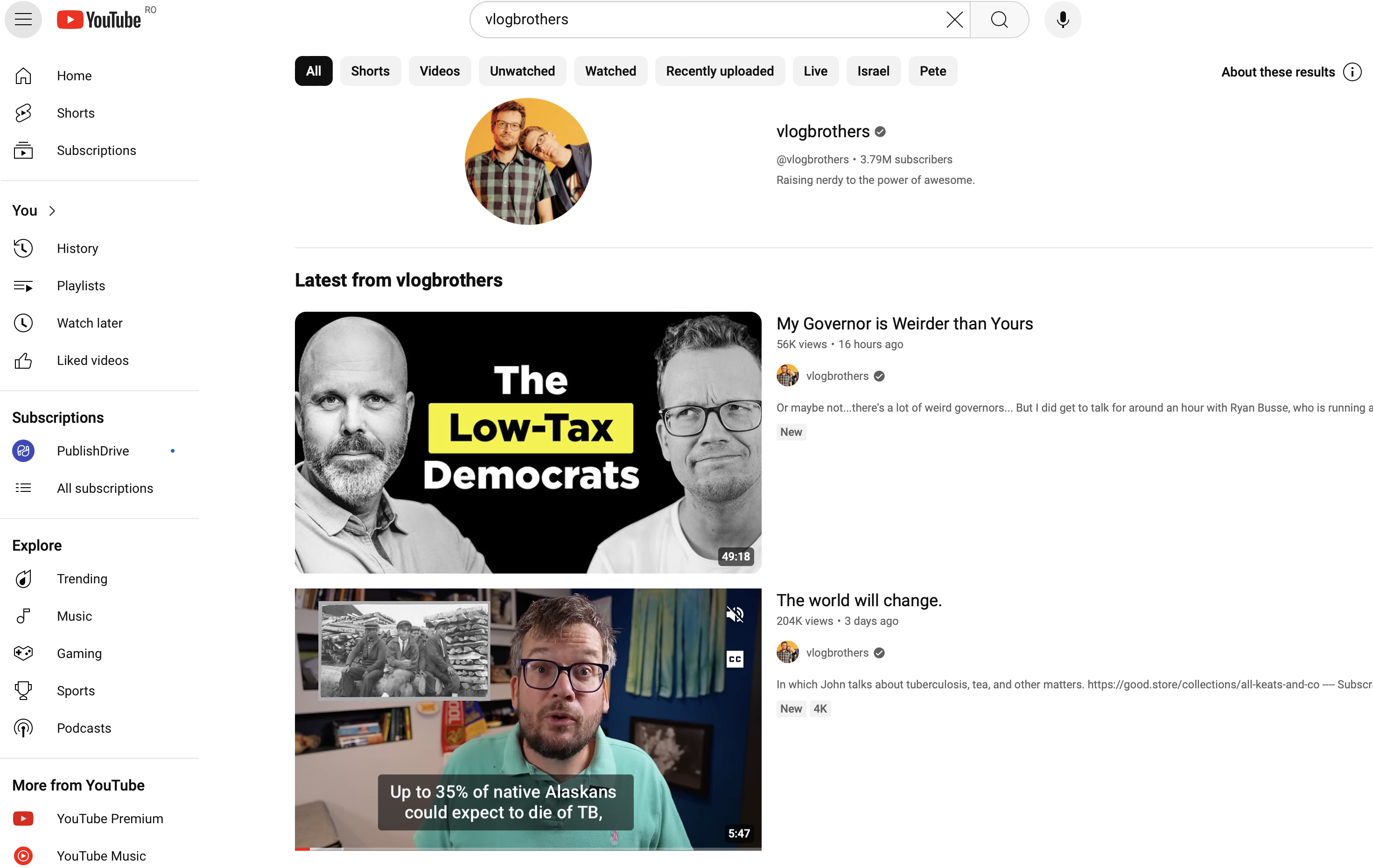
3. Virtual event virtuoso
During the pandemic, author Celeste Ng, published by Penguin Press, embraced virtual events. She participated in numerous online book club discussions and Instagram Live sessions, keeping her readers engaged from afar. Once the pandemic allowed it, she maintained the pace with mixed on-site and online meetings.
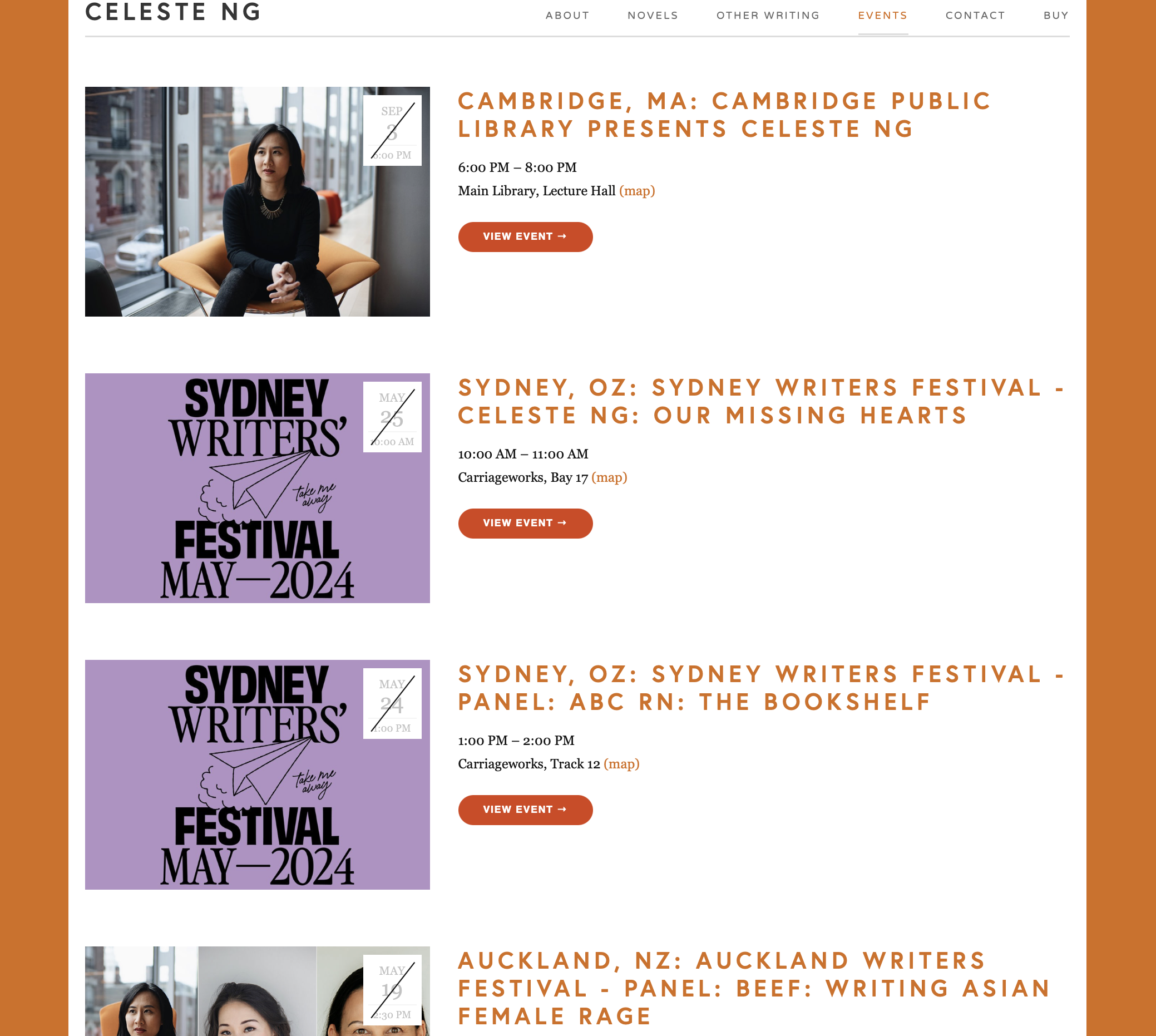
4. Networking master
Publishers often arrange for their authors to participate in literary festivals, book fairs, and industry conferences.
They regularly sponsor booths at major events like the London Book Fair or Frankfurt Book Fair or, depending on the genre, at more specific industry events like the Bologna Book Fair, Romance Con, and others, where their authors meet readers, booksellers, and fellow writers.
5. Data decipherer
Publishers increasingly recognize the value of data-driven marketing strategies, often encouraging authors to understand and engage with their audience metrics.
Mark Dawson, a self-published author who later signed with Pan Macmillan, is known for his savvy use of Facebook ads. His knowledge has helped him build his brand as an author and also his business to help other authors achieve this success.
C. What Is Author Branding About?
At its core, author branding is a strategy that extends far beyond the pages of a book. It's about establishing a distinct identity in the literary and professional world, one that resonates with readers and industry peers alike.
1. Branding is about establishing authority
When an author publishes a book on a subject they're well-versed in, it positions them as an expert in their field. This newfound status can open doors to opportunities that extend beyond book sales, influencing how readers, clients, and peers perceive the author's insights and expertise.
In an era that values innovation and originality, a well-crafted nonfiction book serves as a platform for authors to share unique perspectives and solutions with a global audience. This positions the author as a thought leader within their niche, capable of influencing high-level discussions and shaping the future of their industry.
2. Branding is about building communities
Books have the power to forge deep connections with readers. When an author's work resonates with their target audience, it creates a community around the author's brand. Engaged readers often become long-term supporters and advocates, contributing significantly to the author's brand growth.
3. Branding is about maintaining momentum
A published book serves as a cornerstone for broader content strategies, providing material that can be repurposed across various platforms. This allows authors to maintain a consistent and authoritative presence in their field while potentially attracting media attention and increasing their overall visibility.
Networking and partnerships are natural extensions of effective author branding. A published work opens doors to valuable connections with fellow authors, industry experts, and influencers. These relationships can lead to collaborative projects, speaking engagements, and joint ventures that further enhance the author's brand.
Crafting Literary Legacies
With the emergence of social media, the relationship between publishers and authors transformed, merging traditional publicity tactics with cutting-edge digital strategies.
The future of publishing lies in this delicate balance between creativity and marketing savviness. So, publishers and authors alike, it's time to embrace this new paradigm – your next literary sensation awaits at the intersection of powerful storytelling and strategic branding.